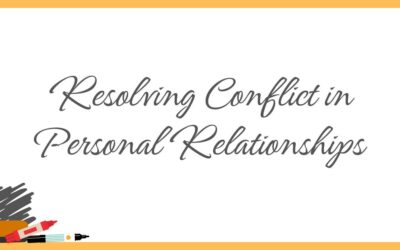Effective communication goes beyond the mere exchange of words. It encompasses how we convey our thoughts, listen to others, and interpret messages. In this lesson, we will explore the concept of different communication styles and how they influence our interactions. By gaining insight into these styles, we can navigate communication challenges, enhance understanding, and ultimately improve conflict resolution.
Understanding different communication styles involves recognizing the unique preferences, behaviors, and patterns individuals exhibit when communicating. Let’s dive into two common communication style frameworks and explore how they can guide us in bridging communication gaps.
DISC Model:
The DISC model categorizes communication styles into four main types: Dominance, Influence, Steadiness, and Conscientiousness. Each style has its own strengths and challenges. Recognizing these styles can help us adapt our communication approach accordingly.
- Dominance: Individuals with a dominance style tend to be assertive, direct, and results-oriented. They value efficiency and may come across as assertive or demanding. When interacting with individuals with a dominance style, it is essential to be concise, focused, and allow them to take charge.
- Influence: Those with an influence style are outgoing, enthusiastic, and persuasive. They excel at building relationships and thrive in social settings. When communicating with individuals with an influence style, it is important to be engaging, provide social interaction, and allow them to express their ideas.
- Steadiness: Individuals with a steadiness style are patient, reliable, and cooperative. They value stability and harmonious relationships. When interacting with individuals with a steadiness style, it is crucial to be empathetic, provide reassurance, and emphasize teamwork and collaboration.
- Conscientiousness: Those with a conscientiousness style are analytical, precise, and detail-oriented. They prioritize accuracy and quality. When communicating with individuals with a conscientiousness style, it is important to provide information, be well-prepared, and focus on the specifics.
Cultural Communication Styles:
Culture greatly influences communication styles. Different cultures have varying preferences regarding directness, hierarchy, nonverbal cues, and more. Understanding cultural communication styles helps us navigate intercultural communication effectively and avoid misunderstandings.
Benefits:
Understanding different communication styles offers several benefits, including:
- Improved Collaboration: By adapting our communication style to align with others’, we can enhance collaboration and foster a positive working or personal environment.
- Reduced Misunderstandings: Recognizing different communication styles helps prevent misunderstandings, as we become more attuned to the preferences and tendencies of those we interact with.
- Enhanced Empathy: Understanding different communication styles cultivates empathy, allowing us to appreciate diverse perspectives and communicate with greater sensitivity.
- Effective Conflict Resolution: By bridging communication gaps and adapting our approach, we can navigate conflicts more effectively and work toward mutually beneficial resolutions.
Strategic Ways to Implement Understanding Different Communication Styles:
- Practice Active Observation: Observe the communication styles of those around you, paying attention to verbal and nonverbal cues. This will help you identify patterns and adjust your communication approach accordingly.
- Ask for Feedback: Seek feedback from others on your communication style and preferences. This open dialogue can lead to better understanding and more effective communication.
- Foster Cultural Competence: Educate yourself about different cultural communication styles and norms. Be mindful of cultural differences in your interactions, and adapt your approach accordingly.
- Develop Flexibility: Cultivate flexibility in your communication style, allowing you to adapt to the preferences of others. This demonstrates your willingness to meet them halfway and promotes effective communication.
- Utilize Communication Assessment Tools: Take advantage of communication assessment tools or quizzes that can provide insights into your own communication style and offer guidance on adapting to different styles.
Conclusion:
Understanding different communication styles is a powerful tool for bridging communication gaps, building stronger connections, and fostering effective conflict resolution. By embracing the diverse ways in which individuals communicate, we can enhance our interactions, promote empathy, and ultimately create more harmonious relationships.
FAQs:
Can people exhibit a combination of different communication styles?
Yes, individuals can exhibit a combination of different communication styles. Each person has a unique blend of characteristics and preferences, making their communication style multi-faceted. It’s important to be attentive and adapt accordingly to effectively communicate with individuals who demonstrate a combination of styles.
What if there is a clash between different communication styles?
When there is a clash between different communication styles, it’s essential to approach the situation with patience, understanding, and empathy. Foster open dialogue, actively listen to each other’s perspectives, and seek common ground for effective communication and conflict resolution.
How can I determine someone's communication style?
Determining someone’s communication style requires active observation, listening, and paying attention to verbal and nonverbal cues. Look for patterns in their behavior, language, and preferences. Engaging in open and honest conversations can also help in gaining a deeper understanding of their communication style.
Can communication styles change over time?
Yes, communication styles can change over time. Factors such as personal growth, experiences, and cultural influences can shape and modify communication preferences and behaviors. It’s important to stay open-minded and adaptable to changes in communication styles.
Are there any online resources or tools that can help in understanding different communication styles?
Yes, there are various online resources and tools available that can help in understanding different communication styles. Websites, articles, and quizzes provide valuable insights and assessments to deepen your understanding of communication preferences and adaptability.













